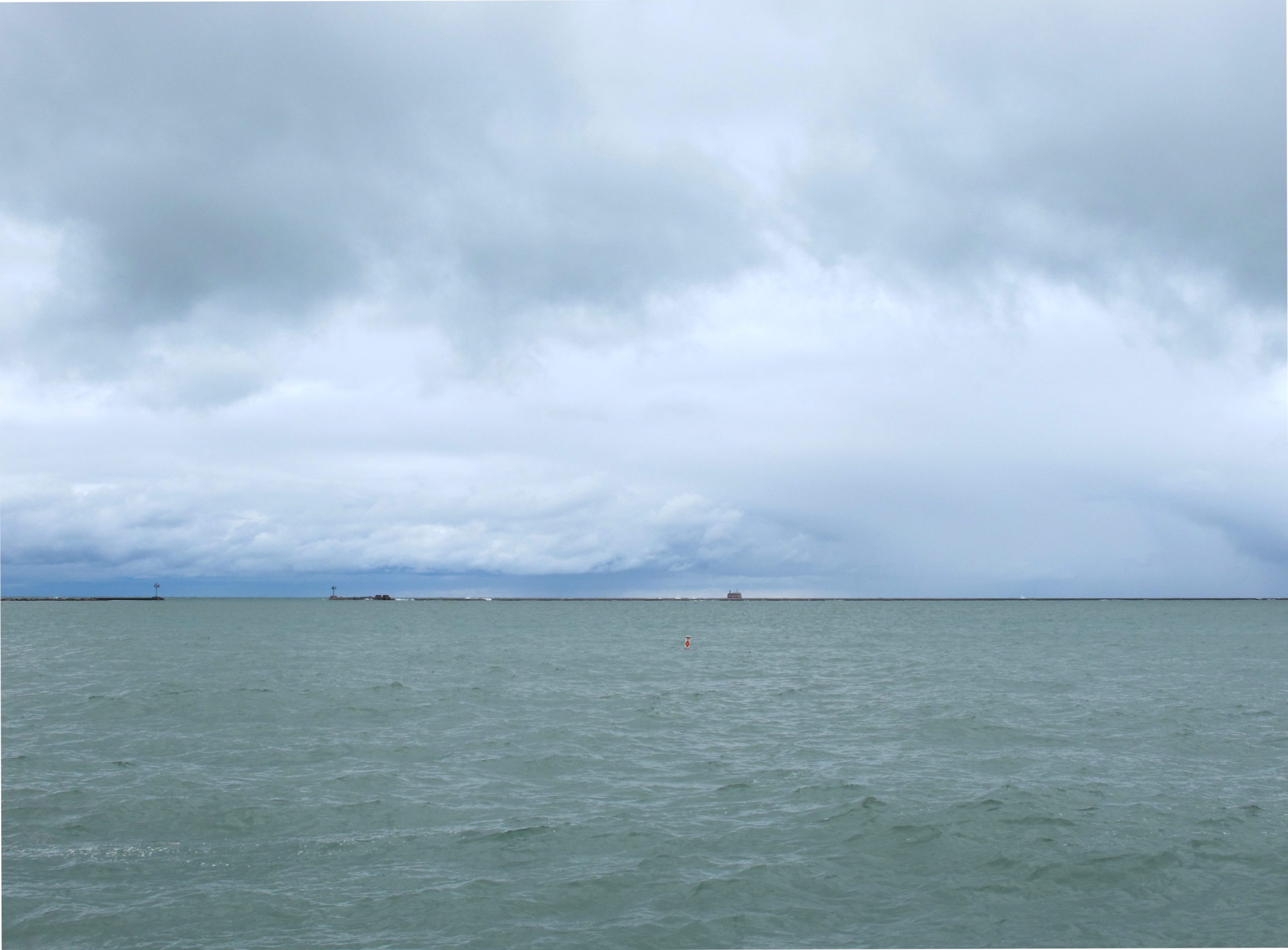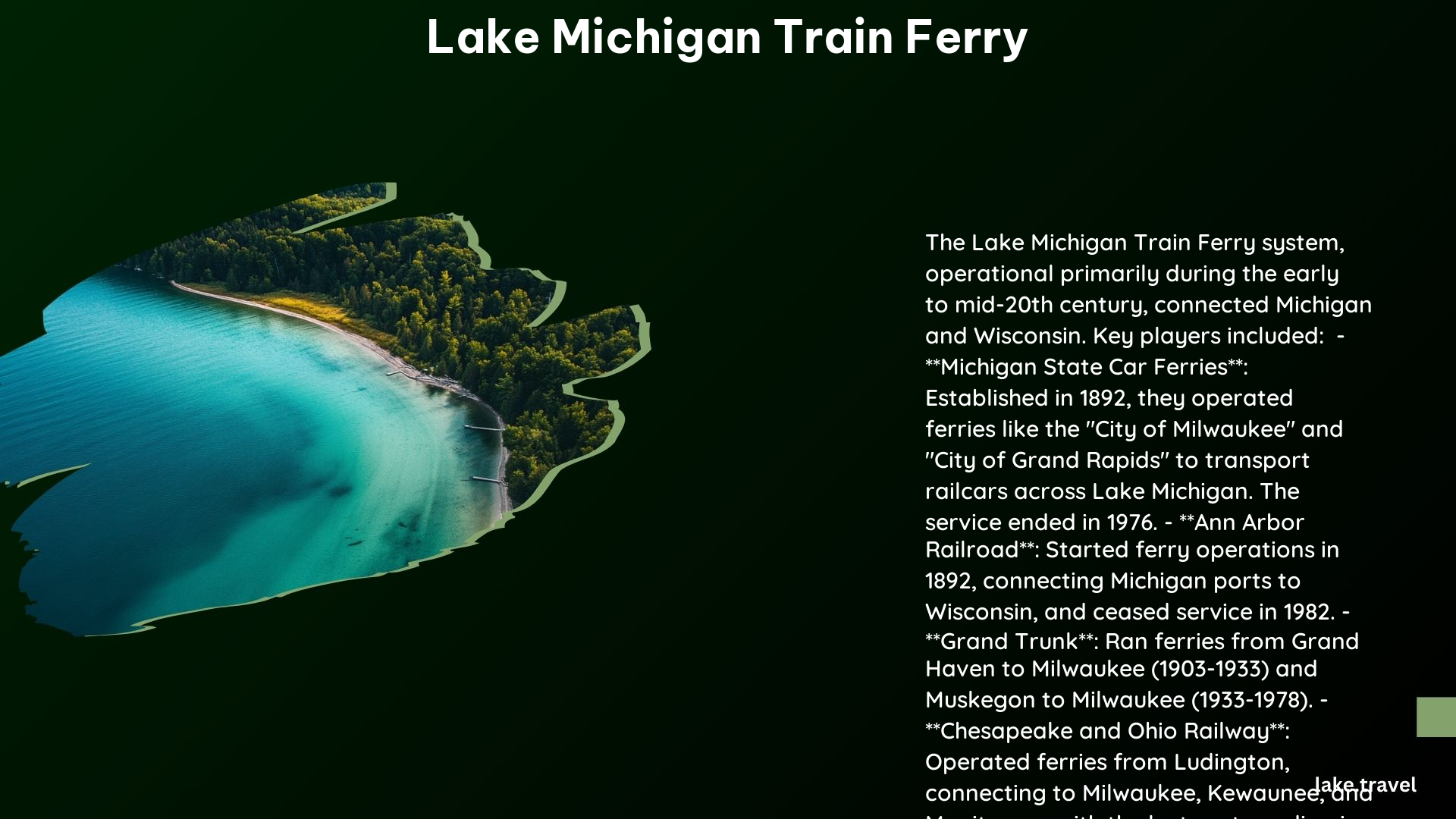Lake Michigan train ferries played a significant role in the transportation history of the Great Lakes region, primarily operating during the early to mid-20th century. These ferries were responsible for transporting railroad cars across Lake Michigan between Michigan and Wisconsin, connecting the rail networks of the two states.
Primary Purpose of Lake Michigan Train Ferries

The primary purpose of Lake Michigan train ferries was to establish a direct rail connection between Detroit, Michigan, and Chicago, Illinois. The construction of rail lines across Michigan enabled the transportation of goods and people more efficiently. However, the biggest obstacle was crossing Lake Michigan, which presented a significant barrier to continuous rail service. To overcome this challenge, the Michigan Central Railroad proposed the use of car ferries to transport loaded rail cars across the lake.
Crossing Time and Cargo

A typical Lake Michigan train ferry crossing took around 4 hours. For example, the SS Badger, which still operates today, takes 4 hours to travel between Ludington, Michigan, and Manitowoc, Wisconsin.
Lake Michigan train ferries commonly transported railroad cars, goods, and people. They were designed to accommodate both freight and passenger traffic, allowing for the simultaneous transportation of goods and people. The ferries played a crucial role in connecting the rail networks of Michigan and Wisconsin, facilitating the movement of goods and people across the lake.
Operators of Lake Michigan Train Ferries
Several rail lines operated train ferries across Lake Michigan, including the Ann Arbor Railroad, Grand Trunk, and Chesapeake and Ohio Railway. These ferries connected various ports along Lake Michigan, such as Frankfort, Michigan, to Milwaukee, Wisconsin, and Ludington, Michigan, to Manitowoc, Wisconsin.
Notable Incidents Involving Lake Michigan Train Ferries
One notable incident was the sinking of the SS Milwaukee in 1929. The ship was caught in a storm and sank with all 52 people on board. The incident led to the construction of a new train ferry, the SS City of Milwaukee, which is now a museum ship and National Historic Landmark.
Current Operations of Lake Michigan Train Ferries
Today, the SS Badger is the last coal-fired passenger steamship in operation in the United States, connecting Manitowoc, Wisconsin, to Ludington, Michigan. It offers a 4-hour crossing and has been in operation for over 70 years. Another ferry service, the Lake Express, provides fast and easy daily roundtrip service between Muskegon, Michigan, and Milwaukee, Wisconsin, taking just 2.5 hours.
Conclusion
Lake Michigan train ferries played a vital role in the transportation history of the Great Lakes region, connecting the rail networks of Michigan and Wisconsin and facilitating the movement of goods and people across the lake. While the heyday of these ferries has passed, the SS Badger and Lake Express continue to operate, preserving the legacy of this unique mode of transportation.
